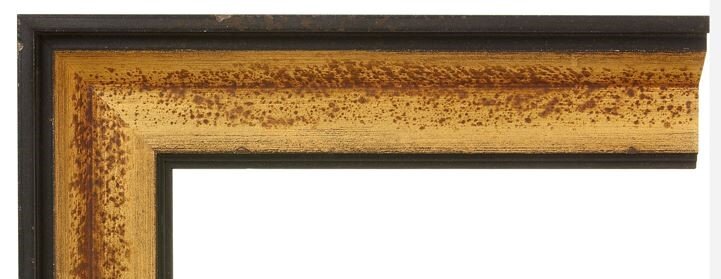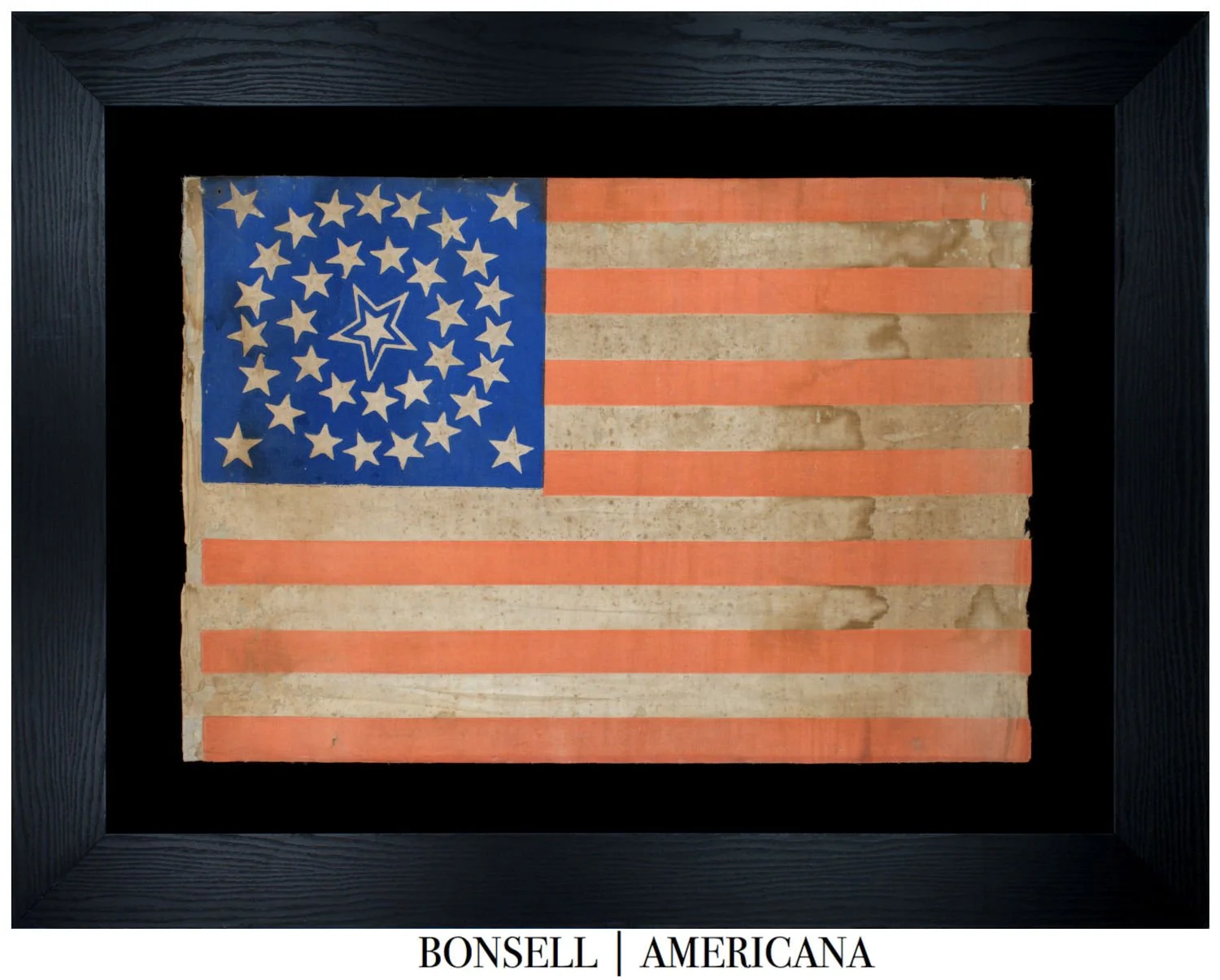39 Star Antique Flag with an Overprint of the California Bear | The Only Example We Have Ever Encountered | Circa 1876-1889
39 Star Antique Flag with an Overprint of the California Bear | The Only Example We Have Ever Encountered | Circa 1876-1889
Frame Size (H x L): 25” x 34”
Flag Size (H x L): 14” x 23”
Offered is a thirty-nine star flag with a California bear overprint. It is the first such example that we have encountered, and we believe that it may be the only remaining example. It is made of silk. Its stars are arranged in a 6-7-7-6-7-6 pattern, and they tumble within each row. The stars also appear to spiral outwards when viewed from the center and moving radially outwards therefrom. The canton has a rich blue hue.
Thirty-nine star flags are an oddity in that their star count was never official. They were made at two different times, initially in 1876 and later in 1889. In 1876, before the admission of Colorado, flag makers speculated that an additional territory would also be admitted therewith. Because of this, some flag makers went from making thirty-seven star flags to thirty-nine star versions in 1876 (e.g., in patriotic centennial quilts). Instead, what actually occurred was only Colorado was admitted, and the flag went from thirty-seven stars to thirty-nine in 1876.
Later, in 1889, Congress considered adding the Dakota Territory as a single state, and based on this, some flag makers made anticipatory thirty-nine star flags. What happened, however, was that the Dakota Territory was then split it into two states: North Dakota and South Dakota, and they were both admitted on November 2nd, 1889. This unexpectedly increased the star count, in 1889, from thirty-eight stars to forty stars, not to mention the unexpected increase from forty stars to forty-three stars this same year (i.e., the unexpected inclusion of Montana, Washington, and Idaho). The Flag Act of 1818 specified that the addition of each star should be on the Fourth of July following a state’s admission to the Union. Because North Dakota, South Dakota, Montana, Washington, and Idaho were all admitted in 1889, the official star count of the official US flag increased from thirty-eight to forty-three in just a single year. Despite this, flag makers made thirty-nine star anticipatory flags based on incorrect assumptions of how and when new states would be admitted to the Union.
The most striking visual feature of this flag is its bear and “CALIFORNIA” overprint, both of which are in gold. The bear is highly detailed (e.g., its fur coat, claws, and yet), yet simultaneously crude and antiquated. In contrast, in modern California state flags, the bear is plain in his appearance and proportions.
The original bear flag was designed in Sonoma, California in 1846 by a small group of ranchers and adventurers, including William L. Todd, a cousin of Mary Todd Lincoln. In what was then Mexican California, they captured the city of Sonoma from the Mexican Government. The Republic of California was formed, and the group designed its flag with a star, bear, a red stripe, and "California Republic" printed across its field. The inspiration for the star was the 1836 California Lone Star flag, and the inspiration for the bear was its image of strength.
In a letter written by Mr. Todd, he noted that the red stripe was made with a strip of flannel taken from a petticoat worn across the mountains, that the bear and star was painted with linseed oil and venetian red, and that “California Republic” was written in ink. Shortly after the first bear flag was designed and used, it was replaced with the US flag. The first bear flag was eventually preserved at the Society's Pioneer Halls in San Francisco until it was destroyed, in 1906, in the fires following the great San Francisco earthquake.
The Bear Flag became the official state flag in 1911. Its bear is based on an actual bear named "Monarch," who was displayed at the Golden Gate Park. Following his life, Monarch was mounted and is now on display at the California Academy of Sciences.
Conservation Process: This flag was hand sewn to cotton fabric, and both were hand sewn to a mounting board. To prevent the black dye in the cotton fabric from seeping into the flag, it was first washed in a standard wash and then in a dye setting wash. The flag is positioned behind Conservation Clear Acrylic (standard) or behind Optium Museum Acrylic (per request).
Frame: This offering is in our Large Distressed Gold Frame.
Condition Report: There is foxing throughout its surface. There are a plurality of stains surrounding the bear, the most notable of which is above him. There are two small tears positioned near the bottom left corner, and there is another small tear (i.e., hole) near the upper right corner. Overall, this flag is attractive, and its condition issues are acceptable, particularly given its outstanding overprint and rarity.
Collectability Level: The Best – Perfect for Advanced Collectors
Date of Origin: 1876-1889
Number of Stars: 39
Associated War: Indian Wars (1860-1890)
Associated State: North Dakota and California












